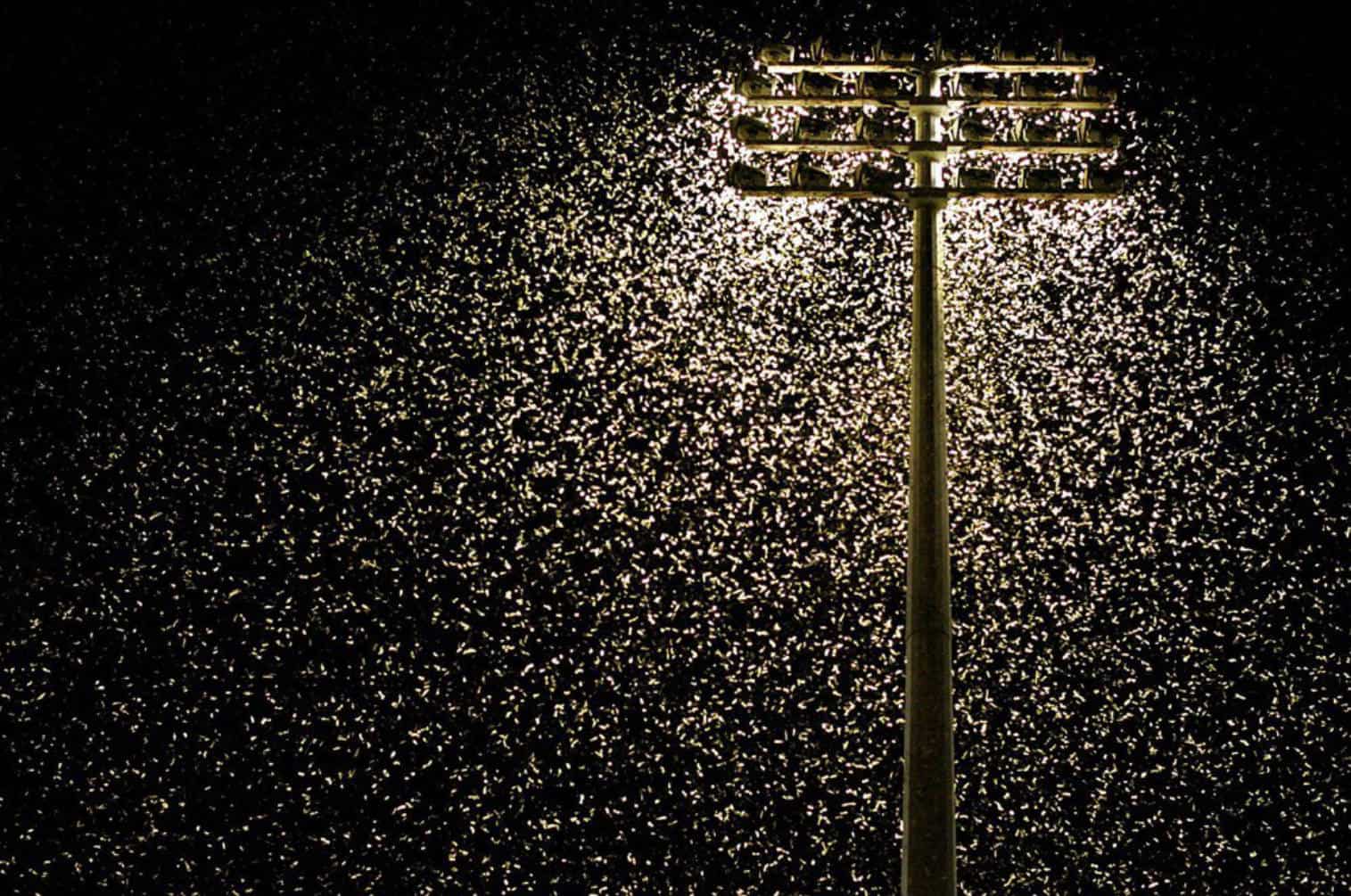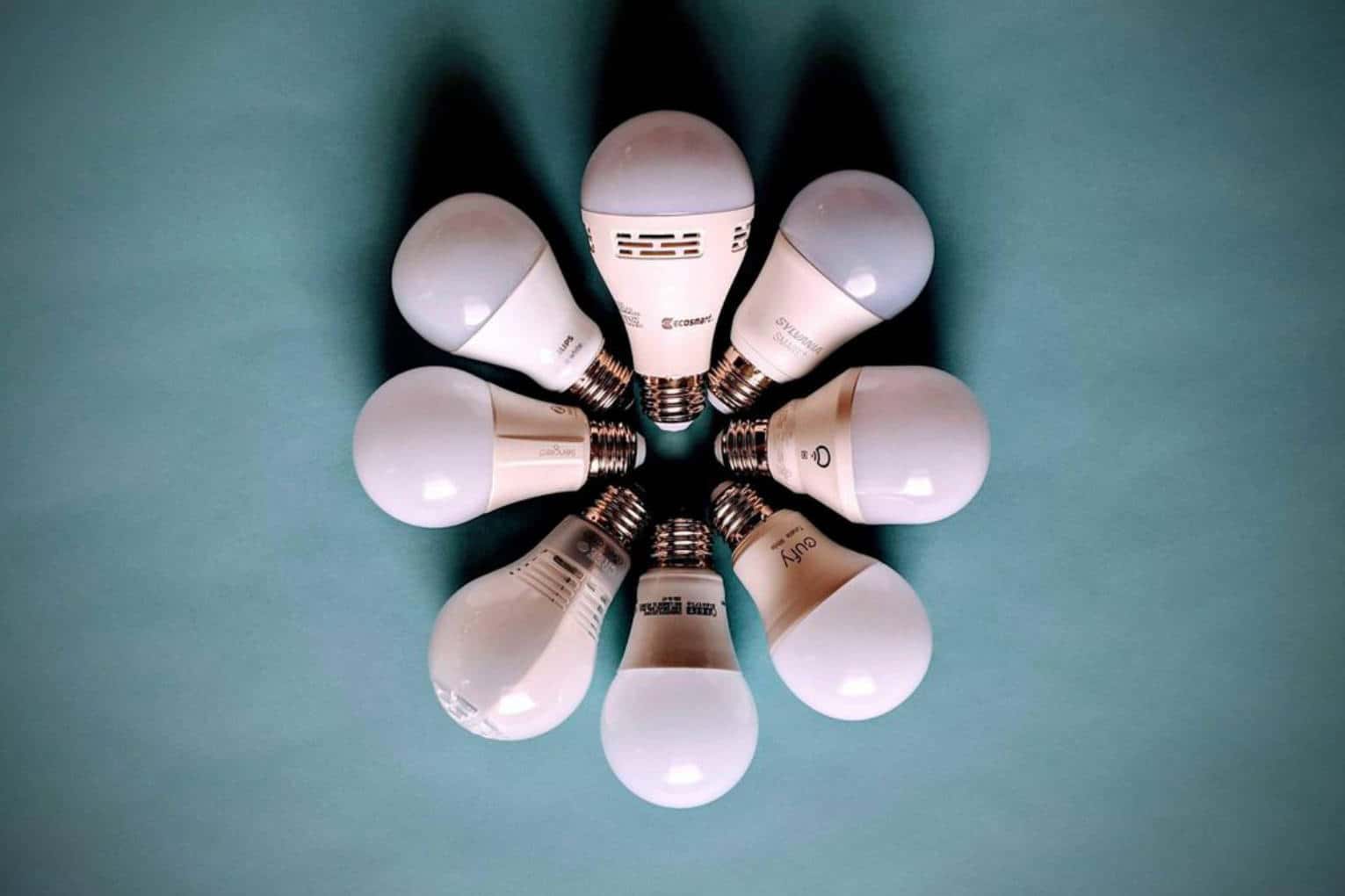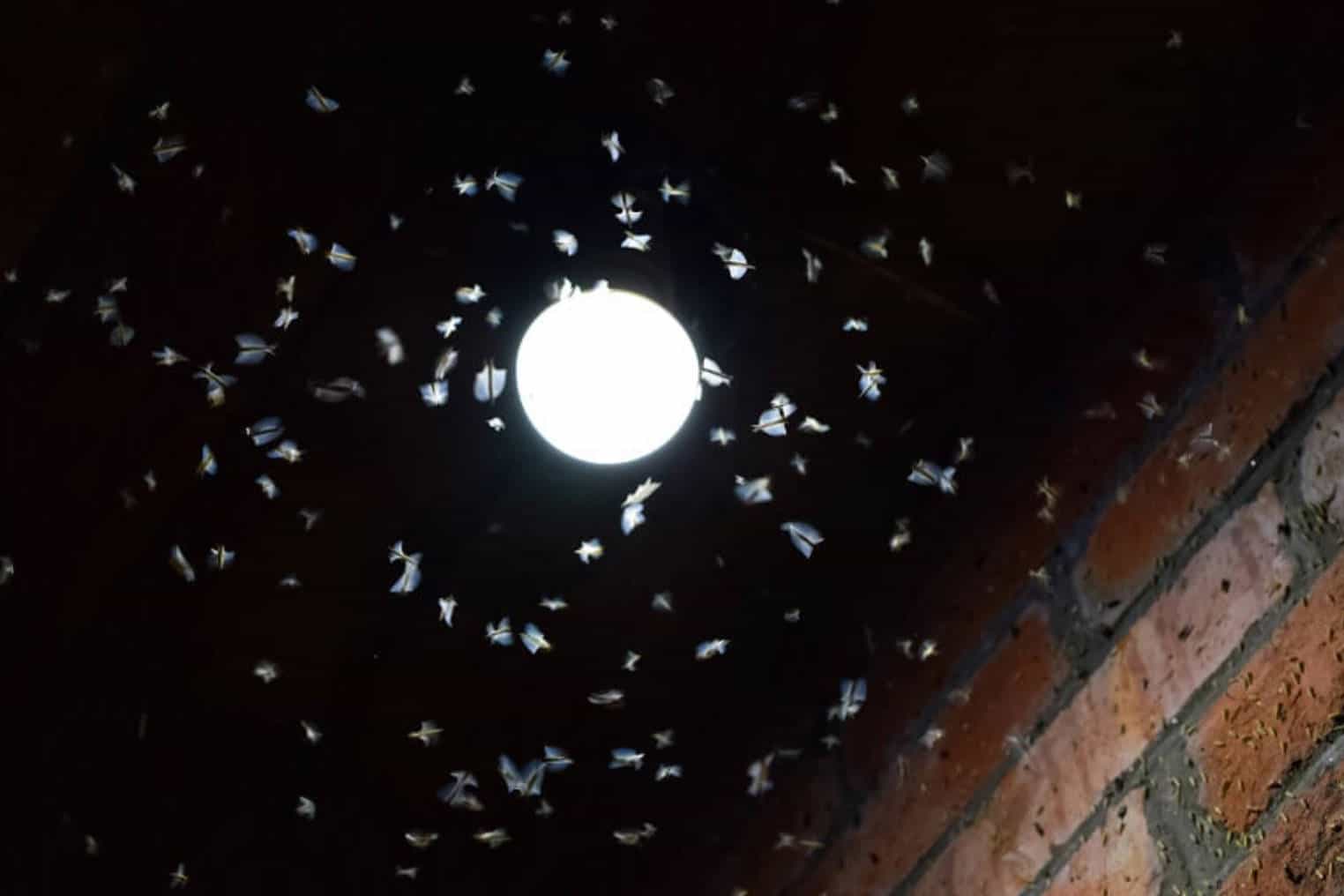You may have experienced how annoying it gets when you go out of your porch to relax but end up going back inside after staying out in just a minute because of the continuous piling of insects?
You notice how one light source has a lower number of insects swarming up from the other. Hence, you may have wondered, “do LED lights attract bugs?”
What is an LED Light?
In case you are not yet familiar with the new lighting fixture technology these days, LED light is the most recommended lighting specification by professionals such as architects, engineers, and interior designers.
Moreover, most homeowners prefer purchasing LED lights compared to the old fluorescent and incandescent light bulbs.
The difference between the LED light from the older generations and inventions for lighting fixtures is that it contains and produces a minimal amount of UV light, making it less attractive to all insects.
The abbreviation LED means light-emitting diode, which is more practical in general compared to ordinary light bulbs.
LED light bulbs are highly recommended by professionals due to their durability and long-lasting lifespan and have a lower chance of overheating.
The LED lights have microchips where the electric current travels through, giving the bulb its luminance. Moreover, it also comes in different types and colors.
Do LED lights attract bugs?
Yes, LED lights can still attract bugs. It is not a surprise that most bugs are attracted to any light source regardless of the wavelength. So, whether you decide to change your light bulbs or not, there is still a chance you will attract a bug, whether it be LED light.
However, the type of bulb changes everything because there are specific bulbs that attract fewer insects than the others, one of which is the LED light.
The UV light produced by the LED Lights is less likely to be seen by the bugs. That is why you will notice that it does not have much amount of bugs that will pile up in one light source.
The light bulbs where you see most insects swarmed up are often the brightest and warmest, producing low lumens.
Since LED lights consume less energy than traditional light bulbs, they produce lower heat energy. Hence, making it an excellent cool light that is less likely visible to any bugs.
4 Reasons Why Bugs are attracted to Lights in General
There has been a misunderstanding about whether LED lights can repel bugs or not. Whether it is LED or not, it can still attract bugs regardless of what kind of lighting it is.
There are multiple reasons why bugs are attracted to LED lights that some people may not know about.
People who love the outdoors, especially spending a night picnic in their backyard, understand the struggle of having a lot of bugs swarming in every light source they see.
Read through the reasons below, so you will understand why do you keep on seeing numerous bugs flying around each and every light source at night:
Bugs are captivated with various spectrum colors
Bugs are not just attracted to lights because of their extreme brightness. They are attracted to it because of the various spectrum colors it produces. The insects will follow the light, whether the light color is green, blue, red, yellow, black, or white.
Bugs are captivated with the wavelength
Another reason bugs are captivated by lights is their color temperature and wavelength. Generally speaking, insects are highly attracted to lights with 400 to 600 lower wavelengths
Bugs are captivated with LED lights thinking it is the moonlight
The nature of the insects is to travel around. They are not meant to stay in one place, but instead, they need to travel and adjust every time the season changes.
Just as how the ancient people used the stars and the moon as their guide to travel, the same goes for insects and bugs.
They use the moonlight as their guide. Hence, you often see bugs swarming up in every streetlight you see because they think of it as the moonlight.
Bugs are captivated due to the heat it gives off
Another reason why they are captivated by the lights is because of the color temperature of the light or what most people know the heat that the light bulb emits.
What is a Color Temperature?
The color temperature signifies the heat temperature of the light, whether it is warm light or cool light. Moreover, the color of the light itself is in reference to the warm and cool colors of the color palette. Hence, the hue of the light depends on its heat temperature.
The Kelvin Temperature is used to indicate the color temperature of the light source.
This may be unclear and may take a little while to adjust but always remember that it is the opposite of each other. The hotter and the higher Kelvin temperature, the cooler its color temperature is.
Take a look at the table below to know the light source of each temperature. You can also use this as your guide in choosing the correct color temperature for your home lighting needs:
Color Temperature (in Kelvin) | Type of Light Source |
2000K | Candle Light |
2200K | High-Pressure Sodium |
2700K | Standard Incandescent |
2000K to 3000K | Sunrise and/or Sunset |
3000K | Halogen |
3200K | Warm Metal Halide |
3200K to 3400K | Tungsten Light |
3000K to 4000K | Fluorescent Light |
4000K | Standard Clear Metal Halide |
4200K | Cool White Fluorescent |
5000K to 5500K | Electronic Flash |
5500K | Daylight Metal Halide |
5500K to 6500K | Average Sunlight |
Warm color temperatures have a lower spectrum than the cool color temperature higher than 4000K.
This means that insects are generally drawn to at least 3 colors of light: Blue, Green, and Ultraviolet. On the other hand, they find the Yellow, Orange, and Pink lights the least attractive.
5 Tips to Avoid Attracting Bugs
We have already established that LED Lights can still attract bugs but lesser compared to other light bulbs such as incandescent bulbs and CFLs. The light in our porches or verandas is often where the bugs keep on swarming up.
Take note of these tips that can help you avoid attracting bugs while you still have sufficient light sources outside of your home. You do not want it to be too dark, do you?
Maximize the use of LED Light Bulbs
We have now established that LED light bulbs can still attract bugs, but it is the type of lighting with the least quantity of insects piling up in one LED light bulb. Hence, make sure that you maximize its usage.
Utilize several light sources
Do not use just one big light source for general lighting. Utilize it by installing several light sources to even out or spread out the lighting and at the same time confuse each bug.
Install light bulbs from the middle to the ground
Bugs’ nature is to fly and travel around. That is why they are generally attracted to lights that they can see during their flight.
To avoid attracting bugs, you can opt to install porch lights from the middle to the ground. It is recommended to use either recessed or surface-mounted lighting fixtures.
Invest in door screens
One of the traditional ways to avoid bugs entering your home is by installing an additional door screen. It can serve as a barrier for bugs regardless of their size because of its mesh screen, and at the same time, it is sturdy since it is made out of stainless steel.
The bug zapper is your last resort
Insects are definitely inevitable because they are part of our nature, and they have a purpose in this world. But, if they keep on piling up your porch uninvited, you may have no choice but to invest in a good bug zapper.
Though, the bug zapper is inhumane since its core finishes are electrified and can kill tens to hundreds of bugs and other insects in one minute. Hence, if you are not a fan of killing any living things, this should be your last resort.
7 Buying Tips on How to Choose LED Lights
Just like how you check the reviews of a specific cellphone model, you should also have a buying guide when it comes to your lighting fixture.
Though it is essential to check the consumers’ review of the type of bulbs and brands you prefer, it will be best to decide something without prejudice.
Keep in mind these buying tips to help you decide on how to choose the best LED Lights:
Check out the light output
When choosing an LED light, make sure that you check out the amount of light it produces by checking the lumens value.
Check the Luminous Efficacy Value
LEDs are an excellent alternative for traditional light bulbs because it helps you save on your electricity dues. Make sure to choose an LED light bulb that has a high efficacy value to make sure you get to save more energy.
Check out the lifespan
LEDs have a longer lifespan compared to the other types of light bulbs. Most LEDs have 50,000 up to 100,00 hours of life, and it would be better if you chose the latter. Regardless of the life hours, it still has a longer lifespan than the traditional ones.
Check the color temperature
LEDs have a feature to have two colors in one single light bulb, which is often called to be bi-color. Choose the color temperature you need depending on the area you will have it installed.
Check the CRI value
The color rendering index, or CRI for short, signifies the quality of an LED light. The higher CRI it has, the better and more realistic color output it emits, even if it is just artificial light.
Take note that natural lighting or sunlight has a 100 maximum CRI. In this regard, choose 80 up to 90 CRI for your LED light bulb, depending on its use.
Check the beam angle
The beam angle indicates the direction as broad as the scope of a single LED light bulb. It is essential that you choose a beam angle that will serve its purpose for a spotlight or general lighting.
Check if it has dimming control
One of the LED lights’ best features is their dimming feature. It can help you adjust and set the brightness of the light depending on the situation or the mood you want to achieve.
Summary
If you ever wonder, “do LED lights attract bugs?” the answer is yes. But, note that LED lights somehow help reduce the potential swarming up of bugs in a specific area.
Therefore, whether it is an incandescent or an LED light, it will still attract bugs. It is just a matter of what kind of light source because some attract too much and some do not.






